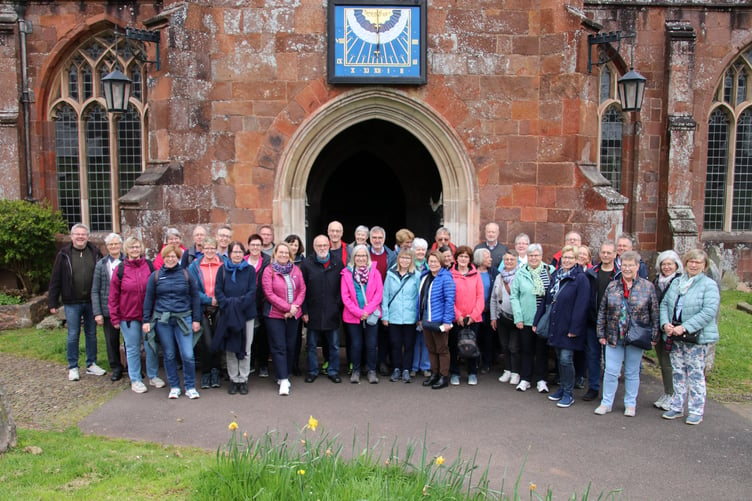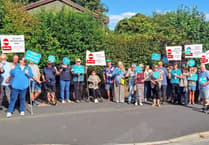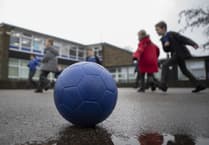CREDITON regularly hosts visitors from Germany, the Netherlands and other parts of Northern Europe, and this week it was visitors from Germany who were welcomed.
A total of 38 came to the town from five villages around Amoneburg in the Hessen area, about 80 km from Fulda.
They came to Crediton because the Saxon saint and missionary, Boniface, who was born Wynfrith in Crediton in 680AD, became one of the greatest early Christian missionaries.
He founded the Christian Church in Northern Europe which is today part of Germany and the Netherlands.
He is known as “the Apostle of the Germans” and “the First European”.
Wynfrith studied at the monastery at Exeter, then at the monastery at Nursling, near Southampton, where he was noted as a scholar and teacher, but he felt called to the missionary life.
In 716 he set sail to convert the heathen tribes in Frisia (now Friesland) in the Netherlands.
Although this first mission was not a success, his subsequent work in Frisia and Hesse, now backed by Papal authority, gave him a reputation as an outstanding missionary and administrator. At this time, the Pope gave him the name of Boniface.
In 722, Pope Gregory II made him Bishop of all Germany east of the Rhine and Boniface embarked on 30 years of missionary work in Hesse and Thringia.
He boldly tackled superstition, including felling Thor’s scared oak at Geismar before hostile tribesmen, and laid the foundations of a flourishing new church.
In 738 he was made Archbishop and became responsible for bishops from Utrecht in the north to Salzburg in the south.
He worked closely with the two leaders of the Franks, Carloman in the east and Pippin III in the west and so laid the foundations of Charlemagne’s Holy Roman Empire 50 years later.
In 753, now an old man, he set out again to convert the wild tribes of Frisia.
On June 5, 754, he and his companions were surprised at dawn by a band of heathen warriors near Dokkum.
Boniface was struck down by a sword which pierced his holy book he raised to shield his head.
As he wished his body was taken to Fulda for burial.
NATIONAL SHRINE
The 38 German visitors travelled to the UK and arrived at Southampton where they took part in mass at Nursling.
They also visited Buckfast Abbey in Devon and, in Crediton, the Roman Catholic Church of St Boniface, the National Shrine, which contains two relics of the Saint given by the Bishop of Fulda and authenticated by him.
They also visited Crediton Parish Church where they saw some of the items relating to Wynfrith and Boniface, stained glass windows, the Witold Kawalec sculpture of Wynfrith, the Boniface Cope, etc.
A guided tour of the Boniface trail around the town followed, visiting all of the glass panels depicting the life of Wynfrith/Boniface.
St Boniface is the Patron Saint of Crediton and Devon. Boniface was baptised at one of the churches near Amoneburg, Die Lindaukapelle.
Interpretor and leader of the group was Dr Paul Lang, Deacon and a teacher at a Catholic School near Amoneburg.





Comments
This article has no comments yet. Be the first to leave a comment.